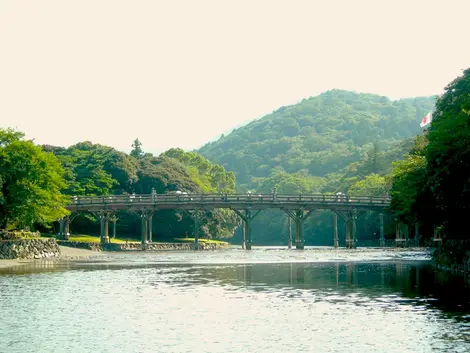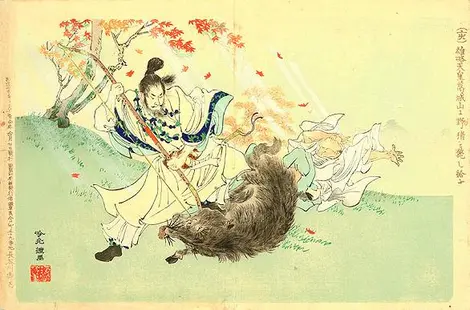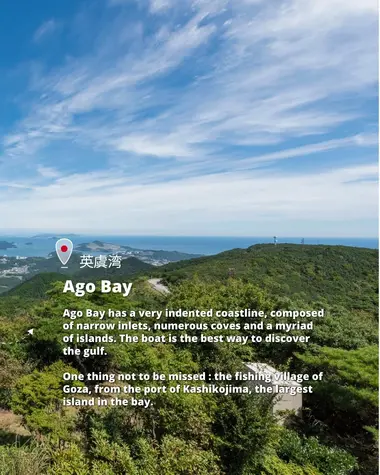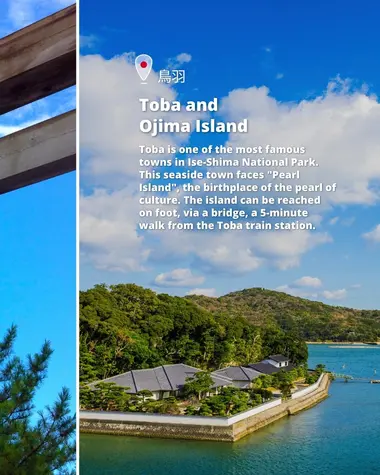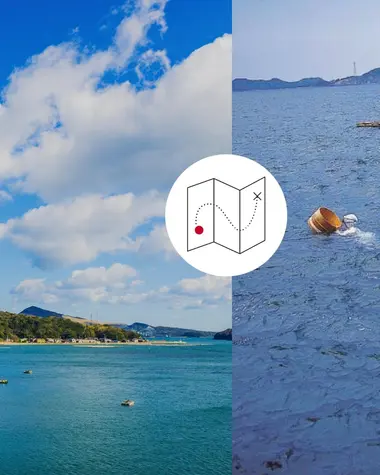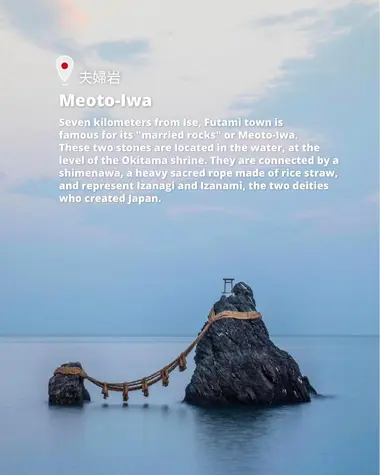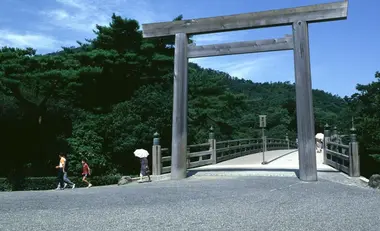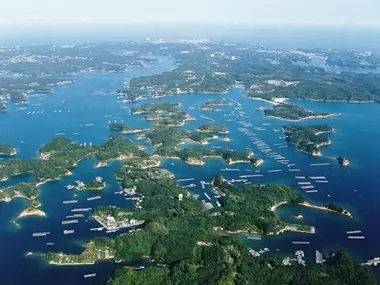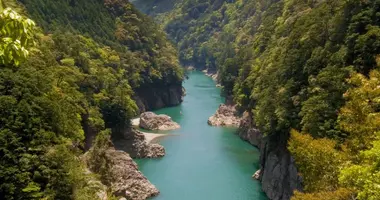Ise-Shima National Park 伊勢志摩国立公園
- Published on : 24/01/2018
- by : O.D.
- Youtube
The Pearl of Shintoism
The Shima-Hanto peninsula, located 150 kilometers southeast of Kyoto, is one of Japan's 34 national parks. It is as famous for the Ise-jingu shrine and pearl culture as it is for the diversity of its landscapes.
Ise-Shima National Park covers more than 55,000 hectares , in the northeast of the Kii Peninsula (Wakayama, Nara, Osaka and Mie prefectures), renowned for its spiritual wealth. It includes the cities of Ise , Shima and Toba . This vast territory is characterized both by its forests inland and by its coastline made up of numerous rias, former riverbeds flooded by the sea which today form a very indented coastline, suitable for pearl culture.
To discover: Our driving itinerary in the Kii Peninsula
Spiritual heart
Beyond its geography, Ise-Shima National Park is known for being home to Ise-jingu which is none other than Japan's most sacred Shinto shrine . The site is made up of two parts: Naiku and Geku , two ancient Japanese architectural models which, according to tradition, are rebuilt identically every 20 years (the last reconstruction to date took place in 2013).
Naiku , known as the “inner shrine”, was built in the 4th century in honor of Amaterasu Omikami , the sun goddess and ancestor of the imperial family. The shrine, which contains the sacred mirror of the emperor, is the more venerated of the two. The site is a 15-minute bus ride from Uji-Yamada Station.
Geku , called the “outer shrine”, dates back to the 5th century. It is dedicated to Toyouke-no-Omikami , goddess of agriculture and house. It can be reached on foot after about ten minutes walk from Ise-shi station.
The Married Couple Rocks
Seven kilometers from Ise, the town of Futami is famous for its “married couple rocks” or Meoto-Iwa . These two stones are located in the water, near the Okitama shrine . They are connected by a shimenawa , a heavy sacred rope made of rice straw, and represent Izanagi and Izanami , the two deities who created Japan.
At dawn, especially between May and August, the view is spectacular. The lucky ones will see the sun rising between the two rocks, with the silhouette of Mount Fuji in the background.
Read also: Meoto Iwa, the married couple rocks of Futami
The man with the pearl
Toba is one of the most touristic towns in Ise-Shima National Park. This seaside town, characterized by its very indented coast, is also the hometown of Kokichi Mikimoto (1858-1954), creator of the first cultured pearl whose group is now the world leader in fine jewelry. At the end of the 19th century, he cultivated his first pearls on the Ojima Island, which he named "Pearl Island" . Today, Mikimoto's work is celebrated there through exhibition halls and shops. The island can be reached on foot, via a bridge, a 5-minute walk from Toba station.
Endangered women divers
Another emblematic figure of Ise-Shima: the ama . These women divers with white headdresses perpetuate a thousand-year- old tradition by snorkeling in search of seafood. Although this difficult and dangerous profession is gradually disappearing, there are still several hundred ama in the peninsula, particularly in the Toba and Osatsu regions . A tradition to discover at the Osatsu Ama Bunka Shiryokan museum (free admission) but also during meetings organized with the ama , a lunch of grilled seafood.
A postcard from Ago
About twenty kilometers south of Osatsu, the landscape changes. Ago bay is what is called a "rias coast", a very jagged coastline , made up of narrow inlets, numerous coves and a myriad of islands. The boat seems the best way to explore the Gulf - famous for its oysters and cultured pearls - and its white sand beaches. Don't miss the fishing village of Goza , starting from the port of Kashikojima , the largest island in the bay.
Address, timetable & access
Address
Timetable
Kintetsu train lines connect Nagoya, Kyoto and Osaka to Ise







